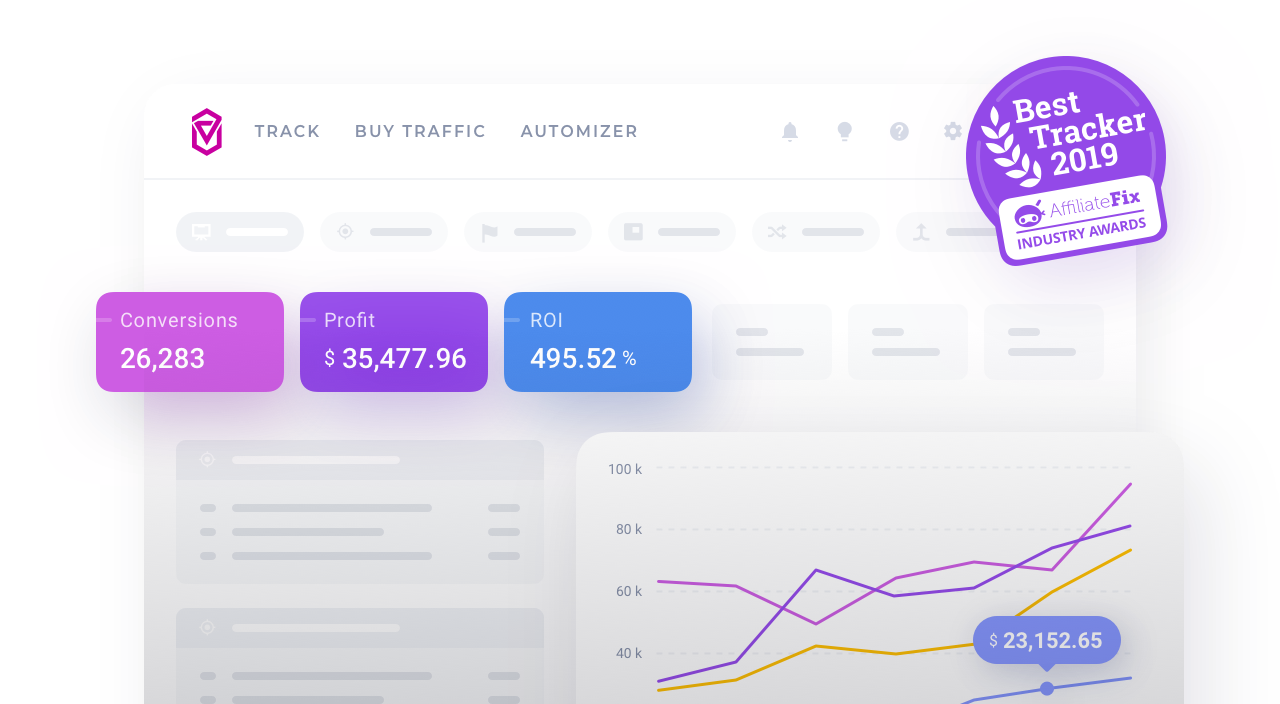Adding a Rule-Based Path

Adding a rule-based path is optional. In the Rules-based paths section in a campaign creation form or in a flow, you can define
I. Add a Rule
The below steps show you how to add a simple rule where you set the time constraints, however, the process of adding the rule is the same for all available conditions. To add the rule, follow the steps:
- Click the Add rule button in the Rule-based paths section in the campaign creation/flow form. The rule's detailed form shows up on the right-hand side.
-
Provide a rule name. The rule name does not need to be unique, however it is worth adding a self-explanatory name because the name will be displayed in the flow form.
Voluum Info: The available conditions in Voluum are categorized into topics and listed under specific tabs.
- Click the Add condition button.
-
Select a condition from the drop-down menu you wish your rule would act upon.

-
Select a logical condition. You have two options:
- Is
- Is not
- Select brand and brand subtype.
-
Click the Apply button.

Example:
To illustrate how easy and straightforward you can set the rule in Voluum, go through the below steps that explain how to display the offer(s) from Monday - Friday, Melbourne time (UTC + 10:00).
- Create the first new condition
- Select the Day of week option.
- In the Day of week section turn on the Is not toggle.
- Select S for Sunday (the first one) and S for Saturday (the last one) options.
- Select the (UTC+10:00) Canberra, Melbourne, Sydney option from the Time zone drop-down menu.
-
Click the Apply button.

The selected criteria has been added to the path that you are now going to define.
II. Provide Path Details
Once the rule has been added, you need to define the path that the rule will be applied to. Firstly, you need to provide basic information to define the path:
-
In the Rule-based paths section click the New path subsection to see the path's details that show up on the right-hand side.
Voluum Info: Every time you add a new path, the default path's name is set to New path.
- Provide a name in the Path name field. The path's name does not need to be unique, however it is highly recommended to provide the name that will be clear to you in a further setup, even more when you define more path entities.
- If required, change the value of Redirect mode. This value will be applicable only for the selected path and will not override the global value in the flow setup.
-
Next, you need to define which offers and/or landers should fulfill the added requirement before getting displayed for your target audience. You need to define at least one offer while adding the rule-based path.
-
Offers: At least one active offer is required to add a rule-based path, but, you might add up to 20 offers to one individual path in the flow. If you need to add more paths, just simply duplicate the created path and add the offers there.
- Direct linking: When you select the checkbox, the path will only include offers – all landers will be excluded. It is used to switch a path’s setup to include/exclude landing pages.
- Landers: Obviously, you might also select landers to distribute your traffic, however those landing pages need to be defined beforehand. In other words, it means that the landing pages with adequate links to the offers (called click URLs/ multi-offer click URLs in Voluum) need to be set before starting creating the campaign entity. At that moment, you can only add the lander entity to Voluum, meaning such pages exist and visitors should be redirected through them.
-
To add the offer (lander), hover over the Select offer (Select lander) section and select the entity from the drop-down menu.
III. Set Weights of the Path and Offer(s) / Lander(s)
A path’s weight value is used to set traffic distribution – by percentage – when a flow has more than one default path. When multiple paths are created, they are automatically assigned a default weight value of 100. A path’s weight value can be edited at any time to redistribute traffic at an optimal ratio. This is usually done once the performance of a path has been accurately measured following the campaign’s test period.
Moreover, the weight value of 100 is assigned automatically to new paths along with any landers/offers added. When any additional landers/offers are added to a path, the ratio (%) of traffic distribution is automatically updated.
For each path, lander, or offer you can manually change the weight value. A weight value can use any numerical value. For example, if there are two landers, each with a weight of 1, traffic will be distributed at a 50:50 ratio. In the same way the offers' weight will be applied.
To manually adjust the entity's weight, click the weight value and provide its value in the field.
Click here to expand a video tutorial section:
Frequently Asked Questions
Have more questions? You might find answers below:
Can you do retargeting using Voluum?
Retargeting, so swicthing the destination of a visitor journey based on set criteria, can be done with Rule-based paths.


